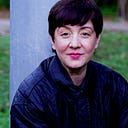Visual Trends in AI Art
Visual Trends in AI Art
The AI of the Beholder
People used to think horses ran like dogs, bounding forward with all four legs off the ground. If you look at early depictions of galloping horses, before the advent of photography, you’ll see a lot of images showing horses in the full stride as imagined by the artists of the time, with all four limbs splayed out as far as they could possibly go.

These images look ridiculous to us today, but at the time they were produced, people had no way of being certain what exactly was happening when a horse ran at full speed– their legs move too fast for the human eye to perceive. This was the case until 1877 when English photographer Eadweard Muybridge rigged eighteen high-speed cameras to capture photographic evidence of a horse’s true gait. In addition to being a major step forward for photography as a medium, Muybridge’s work changed the way we care for horses and informed new carriage designs that led to important developments in the automotive industry.

It also exemplifies a dynamic that remains with us to this day. Oftentimes when a new medium emerges and introduces new tools, a tension emerges between historical precedent and the constraints presented by the tools themselves. Early photography was very much influenced by the dominant visual language of its time: painting. It was common for photographers to model their compositions to use sets, costumes, and other devices to make the finished work mirror the conventions of Victorian portraiture.
As technology advanced and cameras became smaller, faster, cheaper, and more widespread, many artists began to reject representational realism. Why reproduce an aesthetic that properly belonged to machines? Artists moved instead towards impressionism, surrealism, and abstraction. In some cases, they began to change how they painted in response to the conventions of the camera. I think about Edward Hopper who created images in paint that followed the work he did as a lighting designer for Hollywood films.
The story of art in the 20th century is one of the artists coming to terms with powerful new technologies for making images. In the early part of the 21st century, the negotiations between the mechanical and the aesthetic are still ongoing, but now with an added twist: no longer content to merely reproduce visual reality, our tools are now seemingly able to generate visions entirely on their own.
With increasingly advanced ML and machine vision algorithms available every day, it seems as if technology is poised to once again encroach on the artists’ turf. But the story is not so simple. Why do images generated with AI share certain aesthetic qualities? What contributes to the ‘AI art’ look? And where will AI image-making technologies push the conversation next?

This post is the first in a series that will look at the different ways contemporary artists and technologists are wrestling with this question. We will approach this topic by exploring the new aesthetic conventions that are emerging as AI technologies advance.
There are many ways to look at these forms and analyze them. I categorize them into four distinctive aesthetic styles because it’s fun. It also helps when I see new work to understand the unfolding conversation between the new aesthetic genre and tie it back to those movements that have preceded it. Many artworks that use AI produce these aesthetics, which in turn have influenced art and media that is not produced by AI, but nevertheless shares its aesthetics.
I will outline each of the four categories here:
1: Particle systems
Particle systems in game engines are beautiful. They have been a big part of computer graphics in film, data art, and live performance since computer graphics was still a toddler. There have been academy awards for particle systems (Perlin noise) and artists and designers cannot get enough of them.
Read the Particle Systems post
2: Dada 3D
Included in this category are Cool 3D World, FeltZine, Vaporwave, Insta Filters, and whatever those weird ads for video games I get with the absolutely insane premises. These all form part of a movement I term Dada 3D which is something like a surrealist parlor game, a dada manifesto, and Cinema 4D got put into a Blender (pun intended). This aesthetic style uses AI as mocap, detuned shaders, generative sounds, and code manipulation of game engines that were minding their own business. This aesthetic style is the most likely to get copied by sculptors (don’t worry I’ll post pics from Venice) ceramicists, filmmakers (Blumhouse I’m looking at you), and many more.
3: Hyperreal
Deep Fakes and friends use incredible amounts of processing power to appear like the evening news, a talk show host, or some other person in a position of power that would be fun to use as a puppet. I haven’t seen this used on the common person yet, so it is still somewhat baked into the aesthetics of a stunt or a ….deep fake. *I realize revenge porn is using this technique, but I feel this is a foul form of harassment and not an aesthetic.
4: Nightmare Corp.
Works in this category include deep dreams, Dall-E, Wombo apps, and all the 1000000s of copycats we use until Dall-E is out of beta or until we can afford it. These images look close to something someone could make by hand but are rendered by a computer algorithm (from Open AI usually) in 30 seconds or less. They have a unifying aesthetic in that there are smears, colors, and glitches that are still ubiquitous to each algorithm, (Puppyslugs are still my favorite glitch).
Keep an eye out for more articles in this series, become a member today and support writers.
